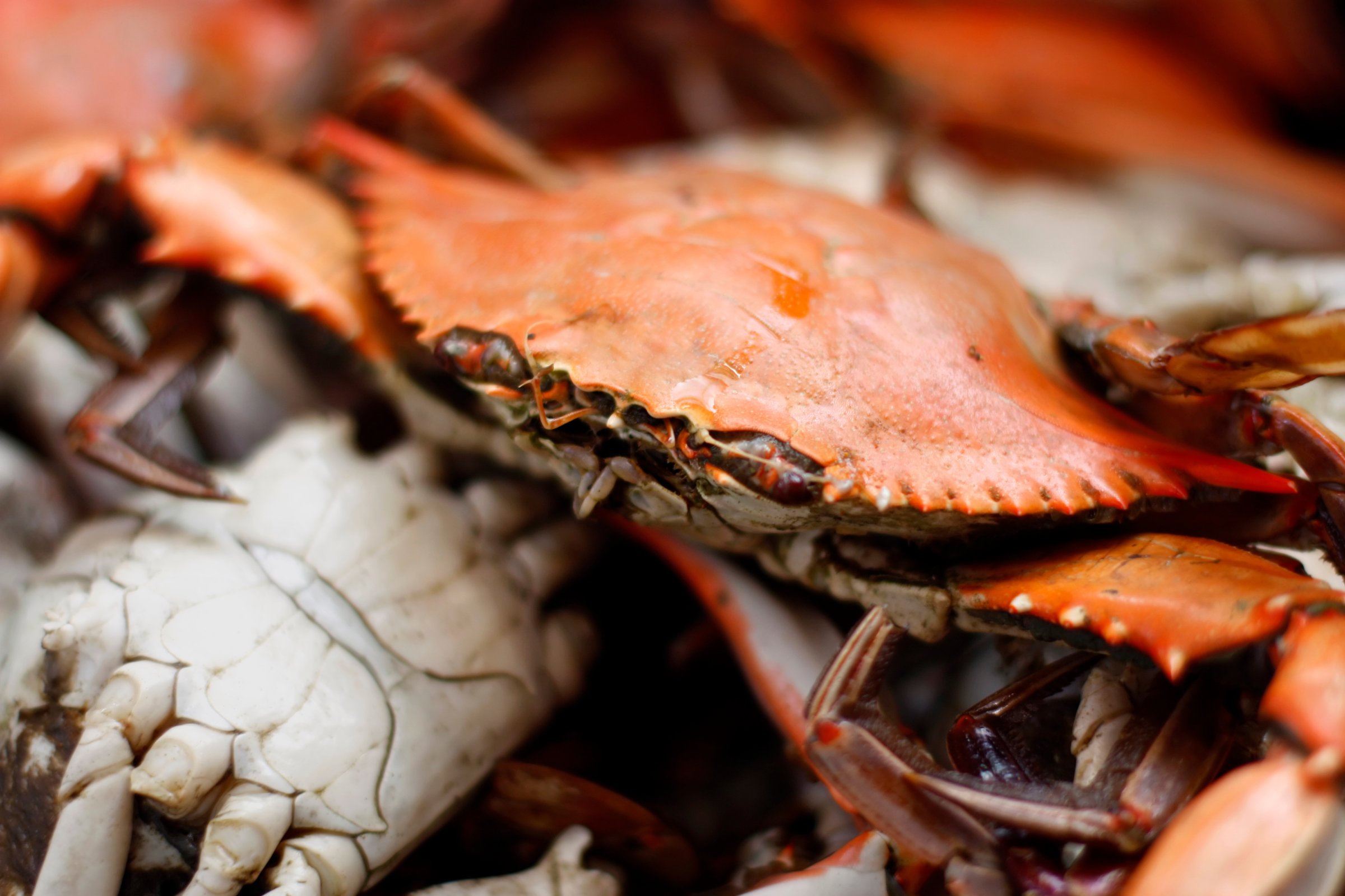
First, we discovered that the fish in our sushi isn’t what it claims to be; then, that 30% of U.S. shrimp is making fools of us. Now, a new report from the conservation group Oceana finds that your tasty Maryland crab cake isn’t safe from seafood fraud, either. A full 38% of Maryland crab cakes the group tested contained imported crab from places as far away as Indonesia and Thailand instead of Maryland blue crab.
“Local rare delicacies in seafood are frequently mislabeled because they’re not widely available,” says Dr. Kimberly Warner, report author and senior scientist at Oceana. “Once you take off the shell of the blue crab and mix it into a patty, it’s hard to tell what it is you’re eating.”
Warner and her colleagues went to restaurants in the Maryland and Washington DC area and collected 90 crab cakes. The researchers sent them to a lab for DNA testing to determine the species of the crab in the cakes. 38% of the crab cakes sold as local blue crab didn’t contain any local blue crab at all; instead, they were stuffed with imported canned swimming crab, mostly from the Indo-Pacific region. The scientists identified eight species, besides blue crabs, in the supposedly blue crab cakes.
MORE: 2,500 Tons of the Food We Eat Is Fake
The researchers found fraud regardless of a venue’s price point. And all that fraud is economically motivated, Warner says. When menus described jumbo lump crab cakes as coming from Maryland, they were $2.12 higher than those that didn’t specify a region.
Your chances of getting actual Maryland blue crab varied depending on where geographically you dined in or around Maryland. Nearly half of crab cakes found in Annapolis and Baltimore were mislabeled. Ocean City and Washington, D.C., had “fraud” levels of about 38%. Your best chance of getting a real Maryland crab cake is on the Eastern Shore, the researchers found, where only one crab cake out of 11 was mislabeled.
“This is kind of a not-so-secret secret in this area,” says Steve Vilnit, Director of Fisheries Marketing director for the Maryland Department of Natural Resources and a contributor to the report. “Maryland does not produce enough crabmeat to supply all the restaurants in the region…but many consumers—tourists and even locals—come to this area and think they’re buying local crab meat because we’re simply in Maryland.” The sad fact, he says, is that not many restaurants use local crab meat.
Maryland blue crab is considered a “best choice” or “good alternative” according to the Monterey Bay Aquarium’s Seafood Watch 2015 recommendations. Ironically, though, it’s often substituted with crab the same regulations mark “avoid”, due to the use of destructive fishing gear like bottom trawling, an industrial fishing method that ensnares any kind of marine species caught in its path.
In March, a presidential task force released an action plan to combat seafood mislabeling and illegal and unregulated fishing, including starting a traceability program and getting rid of harmful fishery subsidies that fuel overfishing by 2020.
In the meantime, however, steering clear of seafood fraud is largely up to you.”We always say to ask more questions from whoever you’re buying your seafood from, whether a restaurant or grocery store or market,” says report author Warner. “If the people who sell us seafood don’t understand that we care about that information, then they’re not going to provide it.”
Buy traceable seafood, the study authors say, which follows fish from where it’s caught or farmed up until it arrives on your plate, when you can, she says.
More Must-Reads from TIME
- Cybersecurity Experts Are Sounding the Alarm on DOGE
- Meet the 2025 Women of the Year
- The Harsh Truth About Disability Inclusion
- Why Do More Young Adults Have Cancer?
- Colman Domingo Leads With Radical Love
- How to Get Better at Doing Things Alone
- Michelle Zauner Stares Down the Darkness
Write to Mandy Oaklander at mandy.oaklander@time.com